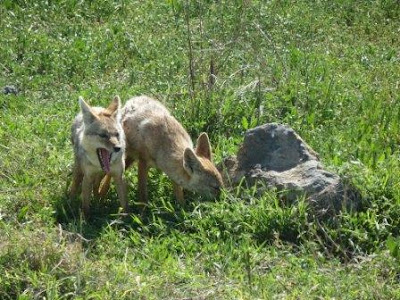I got this idea of reflecting on my experience teaching, from my sister, Martha, who keeps a blog, called The Substitute Chronicles, of her adventures and reflections as a substitute teacher.
So here are some of my reflections from conducting TEEZ Tutor Trainings thus far:
- Practical experience and students’ own discovery will provide a deeper, lasting knowledge. This is a foundational principle of TEEZ. We work hard to incorporate practical work into every aspect of the program. It was reinforced for me during the Tutors training this week at Kalulushi. I had spent a good deal of a 90 minute session talking about the importance of asking questions, and types of questions that can best spur discussion. Then at the end of the day, we were gathered in a circle, each participant sharing what they learned today. One man shared something from when he was practicing leading a study group: he learned the importance of asking the group good questions. I was humbled. My brilliant, interactive session was not the source of his inspiration and new knowledge! (Though perhaps it did plant seeds for his learning). It was his experience actually practicing the skills that sealed the deal for him and solidified his knowing. This encourages me in my efforts to be more interactive with my class sessions, try to let go of control, and trust that the students will learn, especially when they are able to find the answers themselves.
- I had a moment of sheer delight when a student applied a theory to his situation. The young man who has been serving as translator for most of the sessions in the Kalulushi Tutors training came to me at the break with a question. He gave an example of his youth group and wanted my opinion on which stage of group development (forming, storming, or norming-Tuckman 1965) the group was in. Not only did I feel grateful (and gratified, to be honest) that he was mastering and applying the theory, but I also quite enjoyed the opportunity to share stories and experiences with him over some common ground of ministry. Sometimes it feels as if Zambian Christianity and American Christianity are two different religions, so it is refreshing to find places where our experiences are very similar.
- I find myself thinking sometimes, “I can’t believe these adults are listening to me!” This is probably a struggle not uncommon to young pastors, especially when one is first starting out. It can be difficult for me to claim my authority as a pastor and leader when I’m standing in front of a room full of my elders. (I can hardly write “my authority” without musing at the absurdity of the thought!) But then there are moments in which I say something, or lead a discussion, which I can tell has really helped someone think differently or has added an insight to something they already know to be true. I remember the passage from 1 Timothy 4:12—“let no one despise you because of your youth, but set the believers an example in speech and conduct, in love, in faith, in purity.” It is not so much about how old I am, but about what I have to offer the community of faith. In humility and love. When it is an offering which really is for the good of the community, authority will be granted—or perhaps recognized—no matter what the person’s age. It’s funny, but I am surprised over and over to find that this is true, and these adults really are listening to me!
Along a similar vein, I find myself having to walk the delicate balance between confidence and humility. In order that my youth-anxiety is not a stumbling block to actually sharing and doing ministry, I often must pump myself up and even give myself a little pep-talk. (“You’re old enough, you’re smart enough—you’re an ordained reverend for goodness sake!—And gosh-darn it, people like you!”) But I have to be careful to not become over-confident. There is such a wealth of wisdom and experience in the groups of adults whom TEEZ is training. If I come across a western concept, I’m finding it is much better to simply ask “are you familiar with the concept of mob psychology (for example)?” rather than assume everyone’s ignorance. For then I may fall into the trap of being patronizing and arrogant. And I can miss the great opportunity to use the group’s wisdom to aid and increase the learning process. I’m often humbled by the total reversal of my expectations or assumptions. I have as much to learn as I have to teach.
There is a certain amount of "authority" that is seemingly granted automatically to those with white skin, western privilege, and/or clergy status. And it can be tempting to try to clothe myself in this so-called "authority"—to demand or assume authority. And there are perhaps situations in which this can be helpful or good—for example I sometimes wear my collar when going to visit the prison, or when preaching, especially if Ryan is wearing his somewhere—because I've found people treat me differently when I do. But ultimately, I think its about recognizing someone's authority. I can try to take authority, but I won't really have any unless it is recognized by others. And it is in those moments, when someone—especially someone who is my elder, in a totally different country & context—recognizes something I say or do as having authority in their lives, which is truly miraculous to me. It can be nothing but God's Spirit working through me. It is truly humbling. It is my prayer that I will be able to proceed with humility.

































































